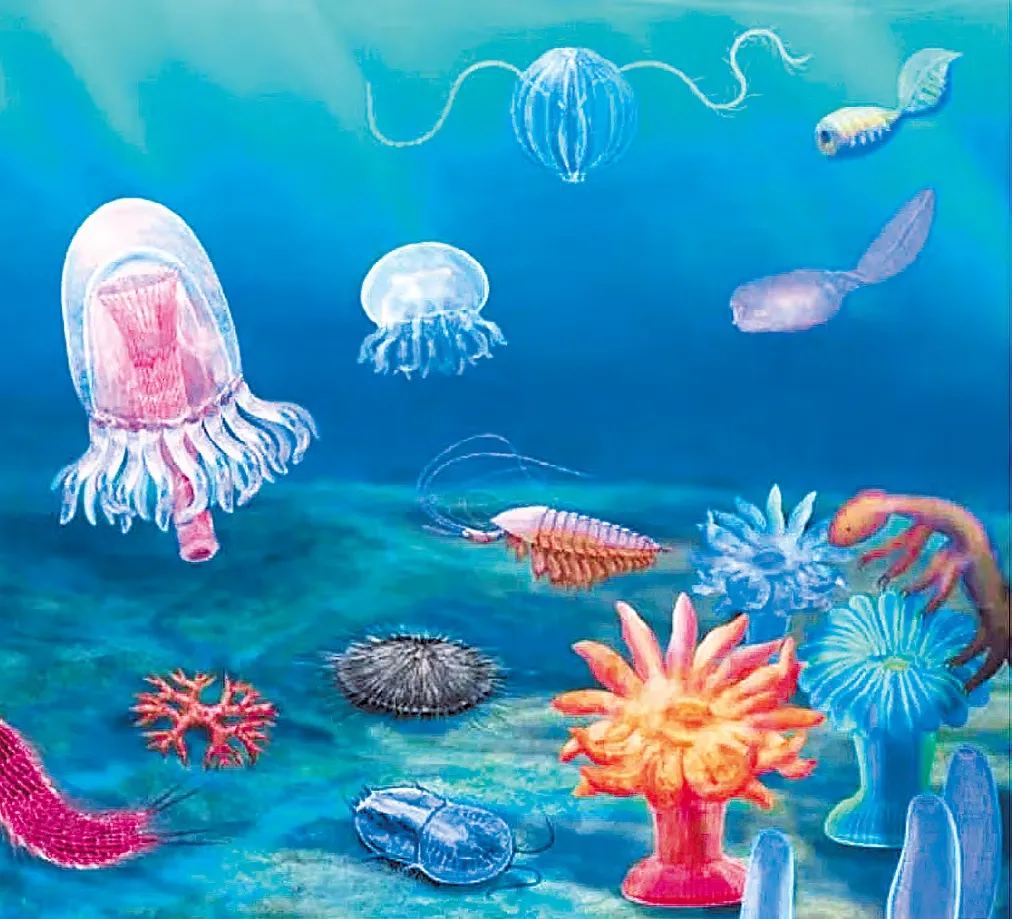Discovery of the Qingjiang Biota
By Wu Qinhu,Du Qiang & Qin Dan Translated by Zhao Mengchen
On March 22,2019,a scientific paper entitled “The Qingjiang biota—A Burgess Shale-type fossil Lagerst?tte from the early Cambrian of South China” was released in the academic journalScience.It pointed out that the Qingjiang biota,found in Changyang County of Hubei Province for the first time,was dated back to 518 million years ago.As a breakthrough in the field of paleontology,this discovery will provide ample scientific evidence towards the evolution and classification of animals on the planet.

林喬利蟲(chóng)的化石展示出非常精細(xì)的結(jié)構(gòu)細(xì)節(jié)A dynamic Leanchoilia fossil preserving fine anatomical details
The Cambrian Explosion is an unsolved mystery in the fields of paleontology and geology.During the Cambrian,(a period that lasted for less than 1 percent of the total history of the earth),most species of animals came into being,which once puzzled Charles Darwin.To figure out the mystery,relevant fossils must be discovered.
Fortunately,a biota of soft body fossils was discovered in Canada successively from the 1910s to the 1970s,which dated back 508 million years.Since the 1980s,Chinese scientists have discovered the Chengjiang biota in Yunnan Province,coeval with the Qingjiang biota.The two biotas in China recorded the prosperous period concerning the origin of animal species evolution,representing the new biological communitiesin different palaeogeographic environments of the same period,thus forming a strong complementary database in the scientific research.

Currently,101 metazoan taxa (53.2% new,85% soft-bodied taxa),have already been identified among 4351 specimens collected,most of which were jellyfish and algal forms without bones.
Zhang Xingliang,an author of the paper and professor from the Department of Geology at Northwest University said,“The Qingjiang biota and the Chengjiang biota were both mainly comprised by soft-bodied fossils,but they lived in different environments and belonged to different species.The Chengjiang biota lived in shallow water closer to the coast,while the Qingjiang biota lived in deeper water far from the coast.”
“ Compared with the Chengjiang biota,the Qingjiang biota was well preserved in deep water so that it was immune to metamorphism or weathering,” said Shu Degan,an academician of the Chinese Academy of Sciences.
As quoted from a commentary inScience,“The treasure trove of the Qingjiang biota provides an exciting opportunity to explore how paleo-environmental conditions influenced ecological structuring and evolutionary drivers during the Cambrian Explosion.”

